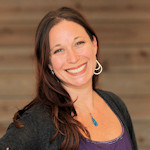Wednesday, August 18, 2021
10:00am – 12:00pm
Pre-Forum Workshop (for Utility and Government Attendees Only)
Session Co-Chairs: Paul Reid, Azusa Light & Water and Adrianne Rogers, City of Colton Electric Utility
Candid roundtable discussion on current issues, including these highest-ranked responses to a recent survey of registrants:
- Transition from Energy Efficiency Programs to Decarbonization Programs
- New Ideas for Low Income Programs
- Opportunities and Challenges with Distributed Energy Resources
12:00pm – 1:00pm
Lunch Buffet - hosted by Brighton Energy
12:45pm – 1:00pm
First-timer Orientation and Welcome
1:00pm – 1:15pm
Welcoming Remarks
Mary Medeiros McEnroe, Silicon Valley Power
1:15pm – 2:15pm
Opening Keynote -- The unified field theory of demand flexibility. Opening up markets that combine energy efficiency and demand response into a viable grid resource
 Matt Golden, Chief Executive Officer of Recurve
Matt Golden, Chief Executive Officer of Recurve
During this talk, Matt Golden, CEO of Recurve, will discuss how MCE and other utilities are creating a market for energy efficiency and demand response as a market hedge and load modifier. FLEXmarket leverages advanced revenue-grade open-source analytics to provide robust baselines to measure and pay a growing network of flexibility aggregators for their virtual power plant's grid impacts. Rather than picking technologies or vendors, the FLEXmarket breaks down barriers to encourage broad market access and focusing on outcomes rather than measures or business models.
2:15pm – 2:45pm
Networking Break and Energy Quiz
Quiz Emcee: Mark Gosvener, Efficiency Services Group
2:45pm – 4:15pm
Strategic/Policy View
Session Co-Chairs: Ron Horstman, Western Area Power Administration and Mary Medeiros McEnroe, Silicon Valley Power
- Moderator: Ram Narayanamurthy, Electric Power Research Institute (EPRI)
- Kate Harrison, City Council, City of Berkeley - Presentation
- Andy Pease, Council Member, City of San Luis Obispo - Presentation
- Zach Struyk, San Jose Clean Energy - Presentation




4:15pm – 5:15pm
Meet the Exhibitors
Session Co-Chairs: Mark Gosvener, Efficiency Services Group and Dennis Guido, Staples & Associates
5:15pm
Adjourn
5:15pm – 6:15pm
Reception
6:30pm
Dinner
8:00pm
Networking Campfire
Unwind at a casual gathering around the fire ring to reflect on the day's discussion and look ahead to tomorrow.
Thursday, August 19, 2021
7:30am – 8:30am
Breakfast Buffet
8:30am – 10:00am
How Utility Programs Have Changed and New Programs Have Been Developed Due to the Pandemic
Session Chair: Mary Medeiros McEnroe, Silicon Valley Power and Dan Kay, Grays Harbor PUD
10:00am – 10:45am
Networking Break with Energy Quiz
Quiz Emcee: Mark Gosvener, Efficiency Services Group
10:45am – 12:00pm
Customer View
Session Co-Chairs: Nathan Aronson, Redding Electric Utility and Joanna Ruiz, Southern California Public Power Authority
12:00pm – 1:00pm
Lunch Buffet
1:00pm – 2:00pm
Midpoint Keynote
-
The Building Blocks of Behavior Change
 Dr. Beth Karlin, See Change Institute
Dr. Beth Karlin, See Change Institute
During this talk, Dr. Beth Karlin, behavioral scientist and founder of See Change Institute, will discuss how to leverage insights from behavioral science to improve energy programs. She will walk the audience through a systematic process to develop and optimize programs by considering the "building blocks" of Audience, Behavior, Content, Delivery, and Evaluation. You will come away with both a broader understanding of how behavioral science can help improve your programs and some specific tips and tricks that you can implement immediately in your organizations.
2:00pm – 3:30pm
Technology View
Session Co-Chairs: Katie Cort, Pacific Northwest National Laboratory and Mark Rehley, NEEA
3:30pm – 3:45pm
Networking Break and Energy Quiz
Quiz Emcee: Mark Gosvener, Efficiency Services Group
3:45pm – 5:15pm
Utility Program Stand-up Challenge
Session Co-Chairs: Cheri Davis, Sacramento Municipal Utility District and David Reynolds, ERS
Join us for the craziest round of concurrent sessions ever! Imagine speed dating meets the lightning round of a TV game show! Visit up to 6 storyboards detailing utility-sponsored energy programs or research. Each storyboard presenter has up to 5 minutes (plus up to 7 minutes for Q&A) to share with you the program’s goals, successes and lessons learned. A bell rings, you choose another storyboard, and the 12-minute clock starts again. Due to limited space, we will break this year’s event up into two segments, with a short intermission to set up new storyboards at the midpoint.
-
Efficiency for Everyone -- Cheri Davis, SMUD
Traditional utility appliance programs focus on incenting customers to buy the most efficient products available. While this helps drive manufacturers to develop higher efficiency products, it does nothing for the customer who cannot afford even a basic Energy Star appliance. Data show that 50% of appliances sold at retail are basic appliances, purchased by price-sensitive customers who are unwilling or unable to purchase a more expensive Energy Star-certified appliance. Enter the Shift model! Shift is a highly targeted, evidence-based retail mark-down that shifts bargain shoppers away from selected baseline appliances to targeted ENERGY STAR models through a point-of-sale markdown. Visit this poster to learn how a handful of utilities are implementing the Shift program and its proven effectiveness at delivering efficiency to a hard-to-reach market.
-
The Electric Oil-less Hot-Air Fryer: Game Changer or Boat Anchor? -- Richard Young, Food Service Technology Center
One of the most prolific pieces of equipment found in commercial kitchens is the gas-fueled deep fat fryer. These appliances represent a versatile cooking platform as well as many restaurants’ primary profit center. The problem is electric fryers typically cost more to operate than gas fryers, which presents a potential barrier to kitchen electrification. A new, oil-less, hot-air fryer technology that has just been introduced to the US market offers an opportunity to surmount this challenge. The hot-air fryer has a higher price tag than a standard deep fat fryer, but it requires no cooking oil – an expensive commodity that costs many times more than either the energy bill or the fryer itself. Similar to induction cooking, the hot-air fryer represents a game-changing approach to kitchen electrification. But how does it function? The engineers at the Food Service Technology Center lab-tested a hot-air fryer. This poster session will present the lab results from the hot-air fryer testing as well as a cost model of how this new technology compares with traditional gas and electric fryers.
-
How Colton Deflated their Balloon Problem -- Adrianne Rogers, City of Colton Electric Utility
Balloon releases are a nationwide problem, and not just for the environment. All utilities struggle with outages and system issues caused by the accidental and deliberate release of balloons. Colton Electric Utility was successful in building community support to ban the release of mylar and latex balloons in its service territory. This poster will present Colton’s strategic community marketing campaign and the actions taken that ultimately led to the adoption of a city ordinance that banned the mass release of balloons.
-
Energy Rated and Added Comfort: AERC-Certified Window Attachments -- Saniya Syed, D+R International for Attachments Energy Rating Council (AERC) and Katie Cort, Pacific Northwest National Laboratory
Inefficient windows can be a huge source of heating and cooling load in the home, but utilities have struggles to find cost-effective measures to address this issue. Window attachments (blinds, shades, storm windows, shutters, and awnings) are an un-tapped energy savings opportunity, and the Attachments Energy Rating Council (AERC)’s recently-launched residential window attachment energy certification and labeling program offers utilities a path to developing and implementing window attachment measures and programs. Learn more about the savings potential of window attachments, AERC’s new ratings, and how utilities across the U.S. are leveraging AERC to achieve energy savings through innovative measures and programs.
-
Preparing Low-Income Communities for TOU Rates – Leveraging Key Learnings from Successful Programs – Mark Martinez, Southern California Edison / Julie Hayes, Julie Hayes Consulting, LLC
Southern California Edison (SCE) has been working in partnership with the Electric Power Research Institute (EPRI) to implement zero net energy systems on affordable housing properties for almost a decade. SCE needed an education component that would increase awareness of energy management in low-income multifamily buildings to help sustain the effectiveness of these technologies and further reduce the energy burden for residents. With the pending launch of SCE’s Time of Use pricing structure for residential customers in late 2020, there was an opportunity to work with one of California’s leading low-income housing groups to develop an energy education roadmap that would inform property staff on how to manage energy use during peak pricing through behavior strategies and sustainable management practices. This poster will illustrate how SCE and EPRI leveraged key learnings from successful multifamily programs in Seattle and Nashville to educate property management and site staff on energy management strategies for TOU and how that knowledge could be used to educate residents when TOU affects them in Q4 of 2020.Southern California Edison (SCE) has been working in partnership with the Electric Power Research Institute (EPRI) to implement zero net energy systems on affordable housing properties for about a decade. But it was time to design an education component that would increase awareness of energy management in low-income multifamily buildings to help sustain the effectiveness of these technologies and further reduce the energy burden for residents. With the pending launch of SCE’s Time of Use pricing structure, there was an opportunity to work with one of California’s leading low-income housing groups to develop an energy education roadmap that would inform property staff on how to manage energy use during peak pricing through behavioral strategies and sustainable management practices. This poster session will illustrate how SCE and EPRI leveraged key learnings from multifamily strategic energy management programs in Seattle and Nashville to develop a toolbox and strategies to help property management and site staff navigate TOU pricing, and how these tools could then be repurposed to educate residents.
-
WorkForce Development for a Digital Electric System – Thomas W. Reddoch, Electric Power Research Institute (EPRI)
EPRI has developed The Center for Grid Engineering Education (GridEd) which is a workforce development initiative that seeks to develop and train the next generation of electric power engineers and data scientists to address the “Digital Electric System of the Future”. The poster will present how GridEd leverages electric industry research to educate a future electric grid workforce.
-
Shifting Perspectives: Guiding the Future of Customer Programs – Kamryn Hutson, Redding Electric Utility
In an effort to align stakeholders around REU’s customer program portfolio, REU conducted a Demand Side Management Integrated Resource Planning process (DSM-IRP). Through this process, REU defined the goals of REU’s customer program portfolio, developed a framework used to evaluate measures and programs against the goals, and developed a recommendation to transform our program offerings. The DSM-IRP resulted in a proposal to transition from the current energy efficiency programs to decarbonization programs. This poster session will detail the process for developing the DSM-IRP, including how the guiding principles were created, insights and findings from the process, and why REU is recommending to transition from EE programs to building electrification and transportation electrification programs.
-
Filling Backpacks to Fill BEU's "Bright Minds" – Education and Outreach for our Next Generation – Amber Rockwell, City of Banning Electric Utility
The City of Banning Electric Utility has a sizable low-income population that largely does not participate in standard rebate programs. An Energy-Star rebate may not be of much assistance to a struggling family, but a backpack filled with school supplies could make all the difference in a child’s life. Currently, 91% of Banning students receive free lunch and live below the poverty level, and their households have been severely impacted by the Covid-19 pandemic. This poster will present our goals, social media campaign, event planning, and takeaways from BEU’s “Bright Minds Promoting Bright Futures” Backpack Giveaway Event.
-
Attic Insulation for Income-Qualified – A Face Palm Experience – Felicia Smith, Utility Conservation Analyst, Healdsburg Electric
To support income-qualified residents during the pandemic, Healdsburg Electric hastily developed a direct install attic insulation program with the goal of increasing the rate of installations. This poster will review the fault points of avoiding an RFP, detail the results (they aren’t so bad!), and lessons learned on how to develop direct install programs for income-qualified folks.
5:15pm – 6:15pm
Reception
6:30pm
Dinner
8:00pm
Wine Tasting & Networking
Friday, August 20, 2021
7:30am – 8:30am
Breakfast Buffet
8:30am – 9:45am
Behind the Meter Energy Storage
Session Co-Chairs: Ron Horstman, Western Area Power Administration and Mark Martinez, Southern California Edison
9:45am – 10:30am
Networking Break with Energy Quiz
Quiz Emcee: Mark Gosvener, Efficiency Services Group
10:30am – 12:00pm
Utility Programs Snapshot
Session Co-Chairs: Kapil Kulkarni, California Public Utilities Commission and Dan Kay, Grays Harbor PUD
12:00pm
Adjourn